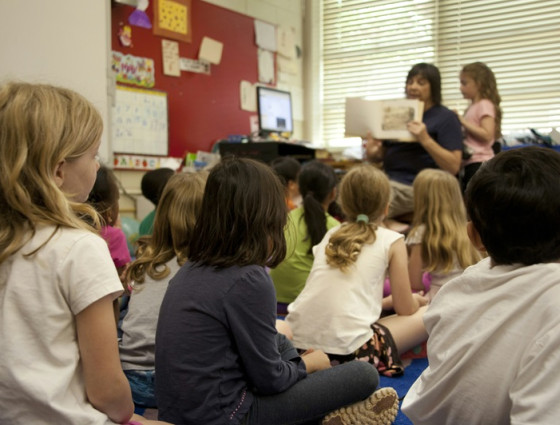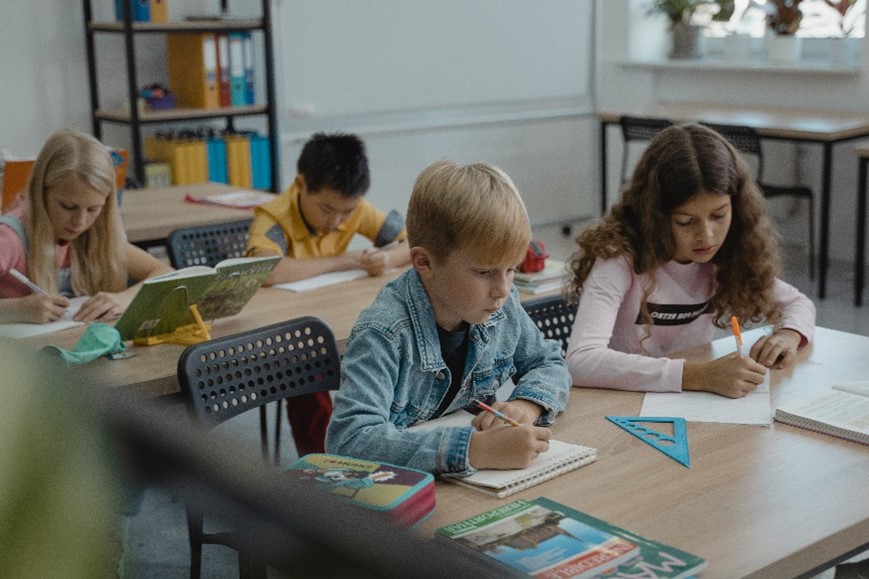
Learning Support Team
Qualified, specialist practitioners providing support to meet the needs of pupils with Specific Learning Difficulties (SPLD) and those struggling to engage or unmotivated to learn.
The Learning Support Team (LST) provides support to settings to meet the needs of pupils who are struggling to access learning and make progress, including those with Specific Learning Difficulties (SPLD).
The team is available to help schools and settings enhance their capacity to meet the needs of children and young people with a range of learning needs through specialist advice, interventions, assessment and training.
Making a referral
Before making a referral, see the consent forms below:
Parental consent form (under 16)
To make a referral to the LST team, see:
Learning Support Resources - Referral Form
For dyslexia referrals, please also complete the Dyslexia Assessment Supporting Information cover sheet:
Dyslexia assessment supporting information
Areas of specialism
Our areas of specialism include:
- literacy for example phonics, handwriting, SPaG
- numeracy
- memory difficulties
- language and communication
- dyslexia
- dyscalculia
- developmental coordination difficulties (Dyspraxia)
- differentiation and inclusion
How we support you
A bespoke service is available to schools and settings to offer assessment, tuition, targeted interventions and training across all key stages to accelerate progress, improve access to the curriculum and remove barriers to learning.
The Learning Support Team provides a bespoke service to schools and settings to offer practical support, training and targeted strategies across all key stages to accelerate progress and remove barriers to learning for children and young people with a range of learning needs.
Examples of support
Assessment to identify strengths, barriers to learning and make recommendations:
The Learning Support Team can provide standardised assessment to gauge whether a child is below age related expectation. They assess the pupil of 12+ standardised tests to provide a score, which can be used to indicate whether a child is below age related expectation.
Assessments help to pinpoint areas that are causing the child difficulty. Assessments are standardised which helps to show how a child is performing against developmental goals rather than ever changing curriculum targets and can be tracked year on year.
An assessment is required if it is need to provide data for an Education, Health and Care Plan (EHCP).
Types of assessment:
- specialist diagnostic assessments
- cognitive assessments
- access arrangement
- monitoring and evaluation
Tuition and intervention
Interventions are to accelerate progress and remove barriers to learning.
The Learning Support Team can provide 1-1 tuition or small group teaching to pupils who have had an assessment or pupils who have been recognised as struggling, at risk of exclusion or below age related expectation.
As specialist teachers the team can help engage and motivate pupils to learn by delivering literacy and numeracy support through a range of approaches, which aim to improve access to the curriculum:
- tailor-made programmes matched to pupil needs
- evidence-based specialist interventions
- modelling strategies and approaches
- Targeted small group teaching
- 1:1 tuition
- evaluation of impact
Support for Teachers, SENCo's, Teaching Assistants and Learning Mentors
The Learning Support Team can help you to adapt the curriculum to make it accessible to pupils who are struggling or identified as below age related expectation. Whether advising on strategies or methods of intervention, planning how to best deliver support in the classroom or my providing training, the team will work with your learning support delivery team (teachers, SENCo's, TAs) to ensure pupils make progress and that pupils learning needs are identified and addressed effectively.
Staff training to build capacity is available on a variety of themes, such as:
- literacy for example phonics, handwriting, spelling, punctuation and grammar (SPaG)
- numeracy
- memory difficulties
- language and communication
- dyslexia
- dyscalculia
- developmental coordination difficulties (Dyspraxia)
- differentiation and inclusion
Our support is not limited to the solutions listed above.
Upon enquiry an adviser will recommend the hours required to address your specific concerns and ensure you get the best value from your SLA purchase.
Contact the team for more information:
- email: LST@worcestershire.gov.uk
Training
The Learning Support Team (LST) with areas of specialism including literacy, numeracy, language and communication, dyslexia, dyspraxia, ICT and EAL offer training to schools and settings to enhance their capacity to meet the needs of children and young people.
The Learning Support Team (LST) are specialist teachers who are skilled and have a high level of expertise in working with children and young people with a wide range of learning needs and SEND. Members of the team hold a range of qualifications relevant to their work including Masters Degrees, Post Graduate Diplomas, Postgraduate Certificates, AMBDA accreditation and Assessment Practising Certificates.
Whole school training
LST provides training which builds the capacity of school staff to meet the needs of children and young people with a range of special educational needs. We work with you to ensure training is tailored to your requirements and delivery is on a suitable date/time.
We can deliver the following to your school workforce:
- use ICT to enable learning
- identify and support phonological difficulties in the early years
- spot and support memory difficulties
- support learners with gross and fine motor difficulties
- use multisensory activities to develop spelling skills
- use the Numicon ‘Breaking Barriers’ programme to help pupils with SEN
- what is 'dyslexia' - what to look out for in the classroom and strategies to support
Contact the Learning Support Team to discuss your needs:
- email: LST@worcestershire.gov.uk
Dyspraxia Pathway resources
Dyspraxia can also be referred to as Developmental Co-ordination Disorder (DCD).
Dyspraxia is a condition which occurs when motor performance is substantially below expected levels and affects physical coordination.
It can have an impact on everyday life skills e.g. using cutlery, sitting on a chair, getting dressed, writing and general co-ordination. Pupils with dyspraxia can also find organisation and concentration difficult.
The characteristics of Dyspraxia
Characteristic features of Dyspraxia are clumsiness and difficulties in learning new motor skills, balance, co-ordination, fine motor skills such as pencil control & manipulating tools and organisational skills.
What to look out for in children and young people
Co-occurring difficulties may be seen in aspects of speech and language, reading, spelling, mental calculation, attention, concentration & personal organisation and social and emotional issues.
Treating Dyspraxia
There is no cure for Dyspraxia, however by implementing effective interventions and resources to support pupils with co-ordination difficulties you can make it easier for children to manage their problems and remove the barrier to learning.
Awareness and training
Children with Dyspraxia who are not recognised may experience failure and frustration, are sometimes perceived as lazy and unmotivated, and may develop difficulties accessing learning or emotional and social problems.
Contact the Learning Support Team to access training, resources and specialist services to help identify and support pupils with possible co-ordination difficulties.
Access resources to support and enhance your capacity to meet the needs of children and young people with a range of learning needs.
Ensure your staff are aware of dyspraxia and have the knowledge required to identify pupils with possible co-ordination difficulties and have the skills to support them in the classroom.
Dyspraxia Pathway booklet
The Dyspraxia Pathway booklet has been developed to help support children and young people with movement difficulties and make it easier for children to manage their problems and remove the barrier to learning.
The booklet will:
- help you to implement your Local Offer as required by the Code of Practice 2014
- identify pupils with co-ordination difficulties
- plan effective interventions and resources to support pupils with co-ordination difficulties
- enable parents to better understand and effectively support their children's difficulties
- suitable for EYFS to KS4
Training is available to support the pathway and provide educational settings with further understanding on how to use the guidance and resources available within the pathway.
For more information on training:
- email: LST@worcestershire.gov.uk
Resources
Download:
Dyslexia resources
Since the introduction of the original dyslexia pathway into Worcestershire schools in 2010 the level of understanding of this condition and the impact that it can have on a child’s learning, attitude and self-esteem has improved considerably. Teachers are now aware that there is a process to be gone through before a decision can be made and tracking progress over time is an integral part to this process.
As this understanding is now embedded in schools the system for obtaining an identification of dyslexia for an individual pupil has been simplified and made more cost effective.
Schools should continue to track and monitor pupils progress and use the checklist of common characteristics as an initial screening tool.
Collecting of background information and evidence remains crucial to the process and if school feel they have gathered enough evidence to suggest Dyslexia could be likely they can then request a Dyslexia Assessment.
The information provided by the school must include:
- information about interventions implemented and that have been completed and reviewed over time (at least 3 individual provision maps with dated reviews
- results of interventions – how much progress – this must be measurable and compared with other children’s results who have completed the same interventions
- assessment and tracking information completed by the school
- characteristic checklists completed by school – should be 50% or more indications
- pupil’ views
- parental views (either face to face meeting with LST teacher or parental view sheet completed)
- PACE questionnaire
- any reports available from outside agencies if available
- evidence of a recent eye test (within 12 months) and where relevant, confirmation that the pupil consistently wears any prescribed eyewear
- copies of two recent writing samples, to include an independent piece and a supported piece (the supported piece should be annotated to describe the type and level of support given)
The specialist teacher will then review this evidence along with a formal assessment and after discussion a decision can be made. This reduces the involvement of outside agencies early in the process and the time it may take to reach a decision.
Dyslexia pathway to access a copy of this document please contact the Learning Support team:
- email: LST@worcestershire.gov.uk
Resources
Download:
- Dyslexia common characteristic checklists (Word document)
- Framework for Action (Word document)
- PACE checklist (Word document)
- Parental interview (Word document)
- Pupils view (Word document)
- ‘Primary Classroom Checklist’ - classroom strategies from page 31-34 of the dyslexia pathway document
- ‘Secondary Classroom Checklist’ - classroom strategies from page 35-39 of the dyslexia pathway document
- Worcestershire Dyslexia Pathway policy (PDF)
Order services
Related

The team supports teachers and education professionals to meet the individual teaching, learning and wellbeing needs of autistic students in their educational setting.

The Educational Psychology Service (EPS) provides professional psychological services for children, young people and families in a wide range of educational and community settings.

Qualified, specialist practitioners providing advice, guidance and resources to support schools and settings to build their capacity to meet the needs of this vulnerable group.

Provides advice and support throughout the county regarding the educational needs of hearing impaired children.

Supports deaf blind and multi-sensory impaired babies, children and young people aged 0 to 19 years, their families and carers.

Support for babies, children and students with a visual impairment, their families and carers.

 Facebook
Facebook X
X Email
Email WhatsApp
WhatsApp Messenger
Messenger